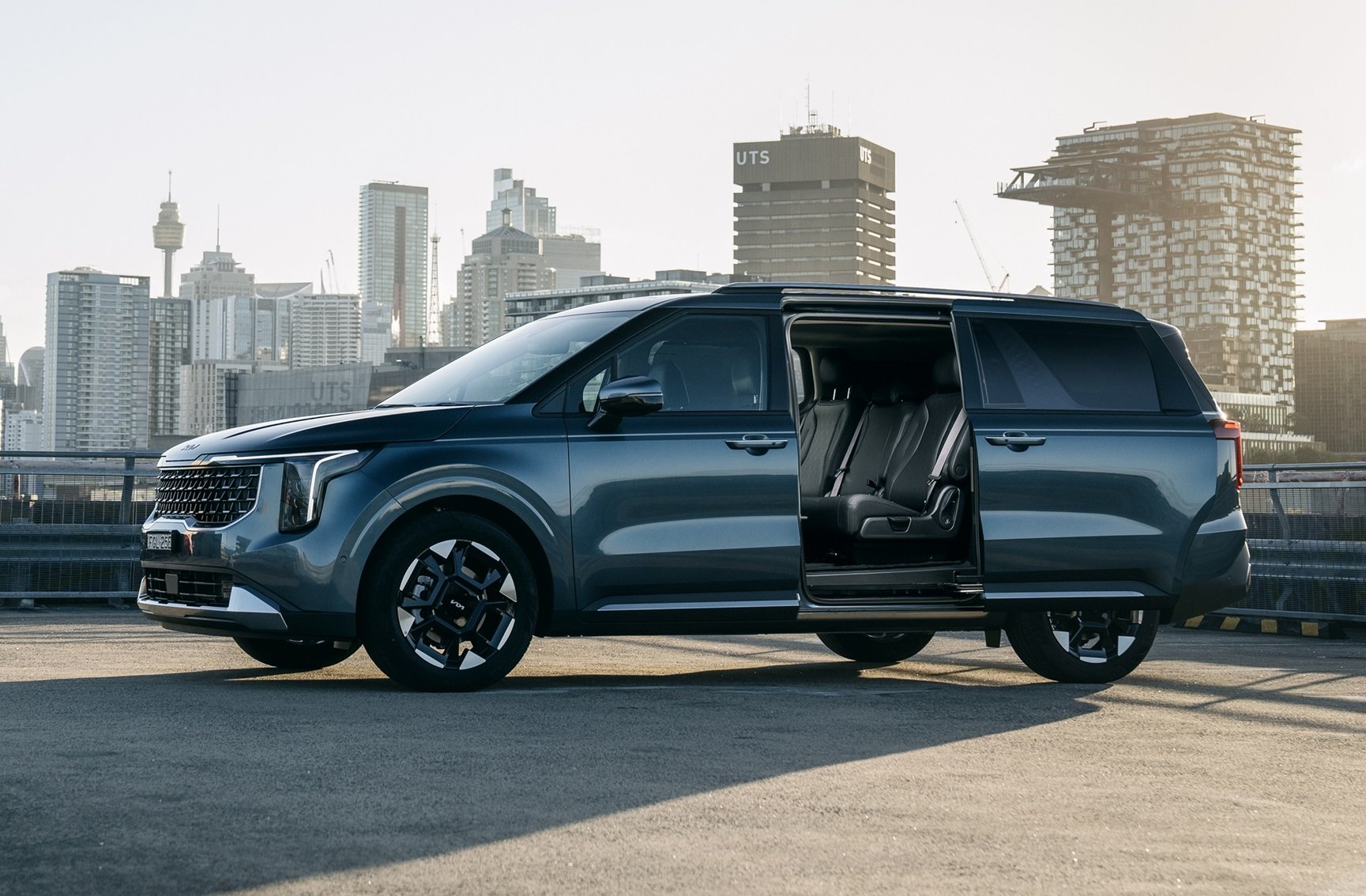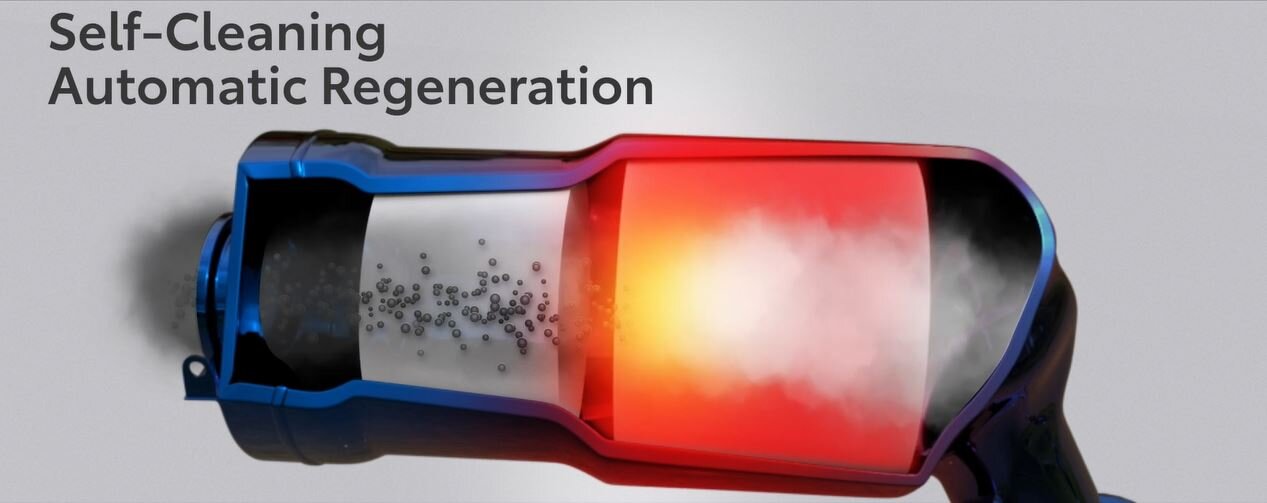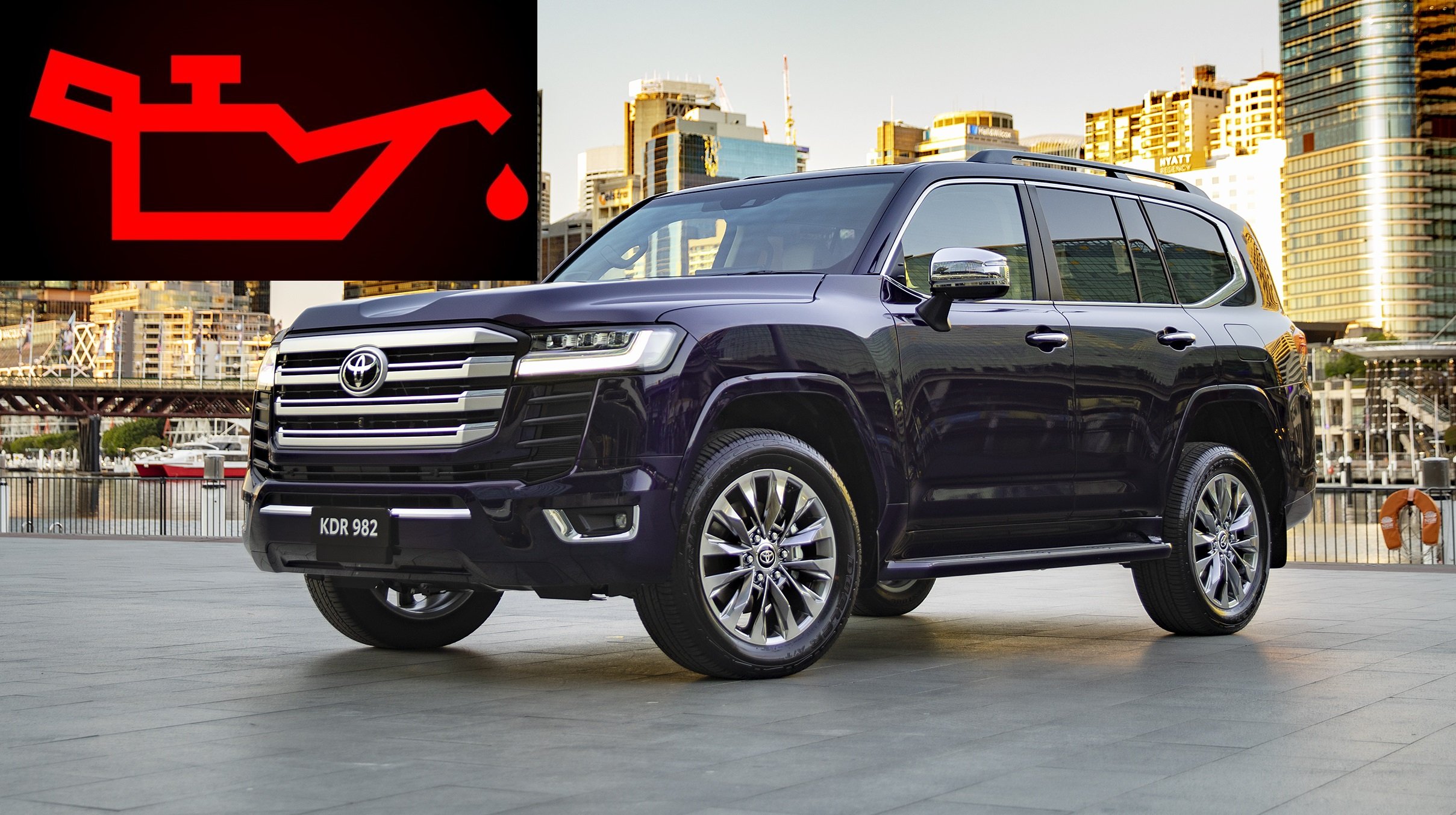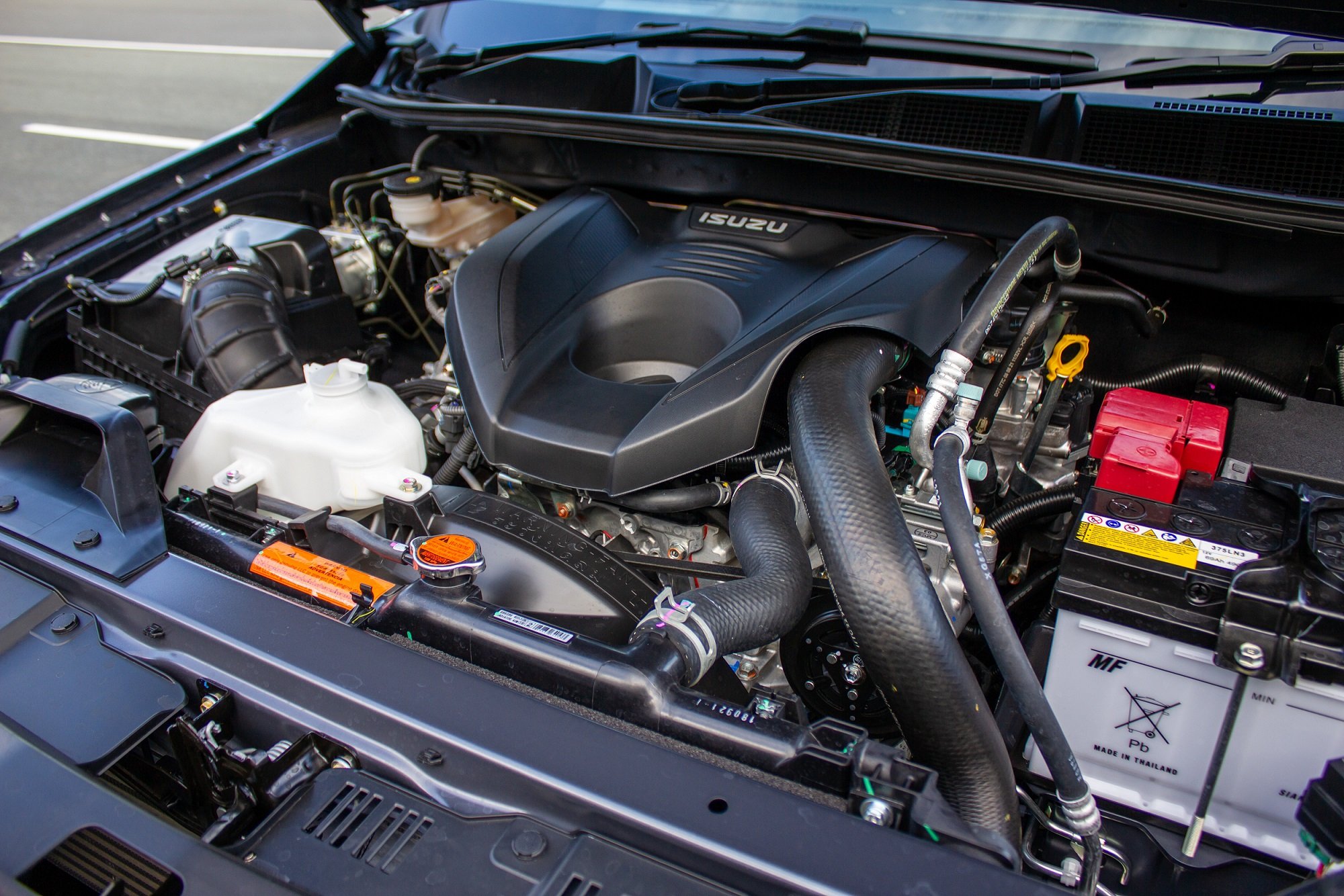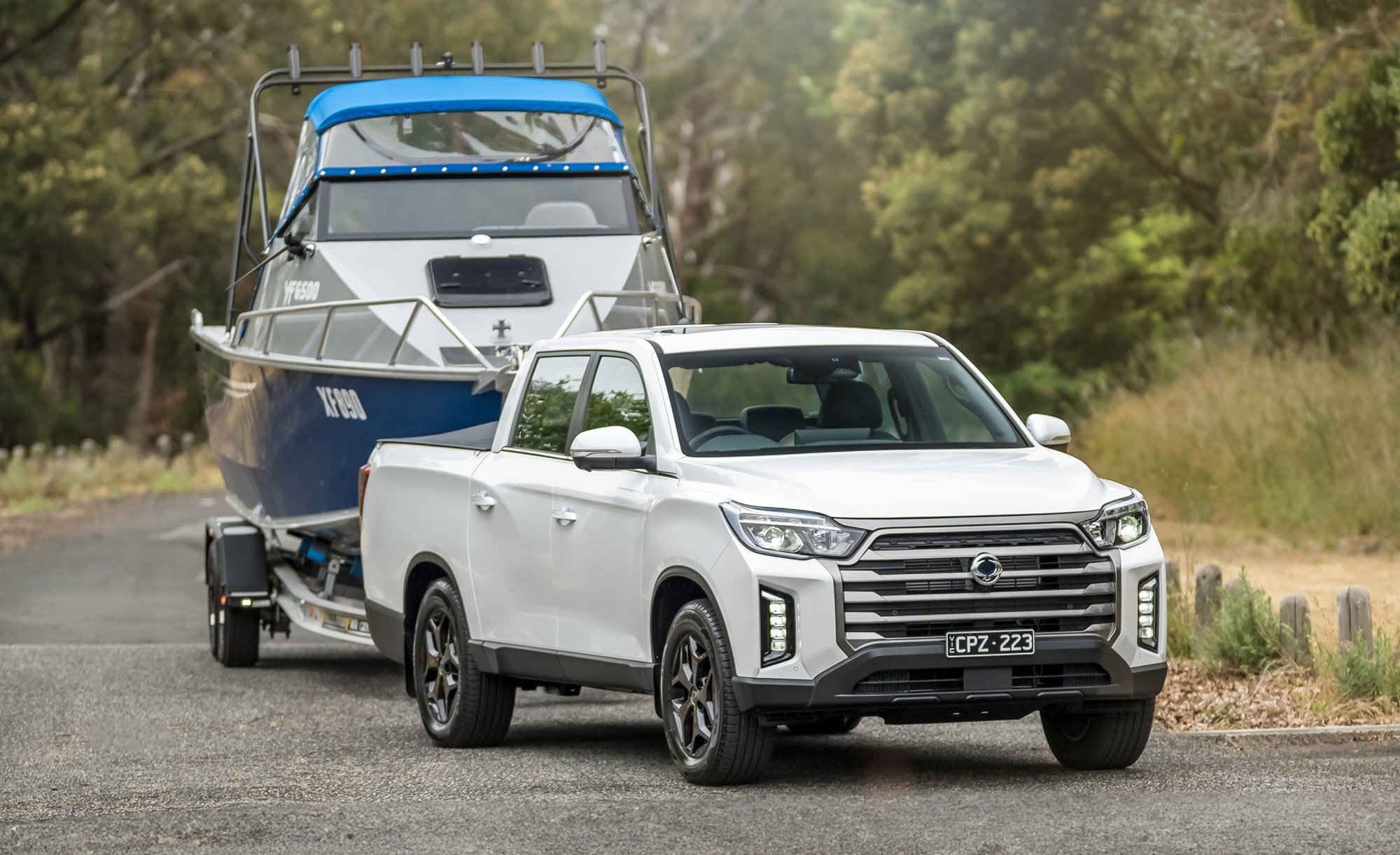Ultimate Diesel Particulate Filter Guide
Diesel particulate filters are everywhere these days and if you own a modern diesel ute, large SUV or a light truck, you’re probably getting around with a DPF under the hood. Here’s everything you need to know about keeping DPFs healthy, avoiding high costs and ensuring you’re compliant…
The diesel particulate filter is a systematic way to minimise emissions that would otherwise, if untreated, increase the likelihood of you and your family developing some kind of malignant health condition later in life.
DPFs get a bad name thanks to the cowboy four-wheel drive aftermarket tuning market, emissions cheaters like Volkswagen AG who soured the potential for diesel as a more efficient fuel, and generally uninformed commentary in the motoring media.
The fact is DPFs are a great idea and when they’re implemented correctly, with in-depth R&D by brands willing to invest in the engineering to do so. This long-form report aims to inform you about what DPFs are, how they work in practice, how you can look after yours, avoiding the pitfalls and reducing costs.
DPFs - diesel particle filters - are a great concept. They take out the dangerously small carbon nanoparticles that diesel engines are so good at pumping out the exhaust port. The DPF traps them and burns them into a the Phantom Zone - where they cannot give you lung cancer. That’s the idea, anyway. Because nobody wants that.
In theory, a DPF needs no maintenance - it’s just a steel chamber up near the engine full of Cordierite or silicon carbide designed to trap microscopic soot, and then periodically the computer turns the chamber into a furnace by injecting extra fuel, thus burning the particles into a less harmful state.
The marketing euphemistic bullshit used to say things like, ‘DPFs are maintenance free and designed to last the life of the vehicle’. These days they just don’t mention the DPF at all because carmakers, presumably, prefer the ignorance is bliss approach.
Except the ‘maintenance free’ thing often doesn’t work out that way. Many people are locked into an epically unpleasant ‘Groundhog Day’ experience where their DPF dies and is only intermittently resurrected, before dying again, and being resurrected. Kinda like Jesus on a treadmill, in a stainless steel casket, minus the cross and the miracle.
In fact a DPF, as a system, would have to be one of the dodgiest, least reliable systems on a modern car. Not because it’s a bad idea - it’s not. It’s a great idea. No lung cancer? I’ll take it.
It’s just been a bad idea historically because it was a bolt-on thing added by carmakers who simply didn’t want to develop the system properly, so they slapped one on. It’s a systematic ‘fail’, like a guide on how not to integrate something new into a modern engine. And the engineers tasked with bolting this system on were handed a design brief that - apparently - included requiring all DPF-supporting systems to function perfectly until the end of time.
DPFs can be impacted by all kinds of 'upstream' problems that culminate in expensive repairs, however, and this is where many of the problems occur.
And ‘failure mode analysis’? This can often be a bit too much hard work for dealership ‘technicians’ who simply aren’t trained properly by the carmaker. If you are an engineer in a car company and you don’t like this being said about what you’ve done on DPFs, then please understand: this is a symptom of the primary cause.
Dealership service departments can be inadequately trained on fault-finding and diagnosis, yet they’re allowed charge you insatiably for their services, but wouldn’t know actual diagnosis if it jumped up and bit them on the arses. If you’re a car dealer swelling up with opprobrium here, it’s merely because you haven’t accepted this is the truth.
So if you’re in the dealership service department as a consumer, and your DPF warning light is on - possibly for the twentieth time - on this torturous merry-go-round - and you’re looking at a DPF replacement for several thousand dollars, before you reach for the defibrillator, or your credit card, read this report in full first.
Let’s stack the deck in your favour.
GOOD DPF SYSTEMS
If you’re permanently locked into a cycle of short trips with lots of cold starts inside the city or the suburbs, with no ability to escape and do a longer drive fortnightly, you might be better off in a petrol.
Reason for this is, those short trips with lots of ‘cold starts’ are detrimental to modern diesel systems for reasons outlined in detail below. The best short-term solution to avoid this is to buy and drive either a modern diesel with good DPF implementation, or a petrol. Although, even opting for petrol is not an immediate fix for this issue thanks to petrol particulate filters.
Alternatively, not all DPF systems are created equal. Complaints about these diesels, which seem to be pretty good at passive regeneration, are extremely rare. Modern diesels you should consider include:
Vehicles AutoExpert recommends are different from vehicles not recommended.
It’s the brands themselves which are the specific reason they don’t get a recommendation below, due to their sustained record of poor customer support. So here are some of the modern diesels that will probably be quite good, serve their purpose, and are unlikely to have any DPF issues, but are terrible at looking after you, generally speaking.
These include:
Volkswagen Transporter
Mercedes Vito/Sprinter
Then we have the vehicles which are recommended NOT on a brand basis, but on a DPF reliability basis they are mediocre, meaning: good, not great. They are:
You know why they put the car dealership defibrillators in the service department? Well, if you want to find out, a good place to start is to own a Toyota Hilux diesel that needs a new particle filter. It’s rumoured that the replacement cost is north of $14,000. A quarter of the cost of a replacement brand new SR5. Outrageous. Oh, what a feeling...
Good diesel engines are fantastic. They offer lots of low-rpm power, meaning they’re doing lots of work with very little revs, while also being breathtakingly frugal on fuel. They’re so effortless for towing, so safe for refuelling in the bush, from a jerry can. These are some of the very good reasons why people buy them.
Cause and effect
A couple of other things to realise.
Most DPF problems are caused by a failure to do adequate highway driving. If you have a DPF-equipped vehicle, try to get out on the open road once a fortnight for about an hour, minimum.
The other thing to remember is that DPF faults are often symptoms, rather than the core problem itself.
SYMPTOM -Vs- PROBLEM
DPF blockage is a symptom, not a problem, in the same way a headache is a symptom of drinking 14 shots of tequila last night: the problem. Replacing the DPF usually doesn’t cure the problem - in fact, it could mean you’ll be back for another replacement in a few weeks-to-months if they don’t actually cure the problem.
You have to prevent the DPF hangover you are experiencing today. It might be simpler than that…
DRIVING FOR REGENERATION
The problem could be as simple as you don’t go for regular highway drives. We’re talking 80km/h or above for a total of an hour or so, every fortnight. City driving is generally inadequate to allow a filter-regenerating burn, at least that was the case with modern diesels going back about 5-10 years when DPF tech was just getting implemented.
A lot of people don’t know this short-driving problem, and of course the people who typically sell cars sometimes won’t hit you with this caveat, either because it might get in the way of you actually buying it (which is their mission) or simply because they don’t know it’s a problem that exists.
Giving you a reason not to buy is unthinkable - the car salesman equivalent of kicking an ‘own goal’ is rare - and certainly it wouldn’t be a stretch of the imagination to envisage a non-mechanic sales type to be ignorant of these things, or the carmaker failing to have dealer staff trained in this sort of thing.
The first step with owning a modern turbo-diesel with a DPF is to drive it on the freeway twice a month for about 30-60 minutes so the DPF can do its soot-burning program and avoid a build-up. Think of it like charging a battery or pumping up your tyres.
INLET AIR PLUMBING
Many people who experience DPF problems are often actually doing more than enough requisite highway driving - so it’s often not that. It could be a problem with the inlet air plumbing. Lots of DPFs fail this way. Subaru was almost famous for this. Volkswagen and Mercedes-Benz vans fail this way, as did the Ford Focus and Mondeo before they were killed off.
See, a modern diesel is turbocharged, and that means the inlet air plumbing is pressurised between the turbo and the engine inlet. There’s a lot of plumbing: hoses connect the turbo outlet to the intercooler inlet, and then there’s a dirty big plastic elephant trunk thing in the case of old Subaru Outback and Forester diesels, so there’s a lot of potential for inlet air leaks.
Holes in the air inlet, however tiny, can cause what’s called misfuelling, where the computer detects too much air as a result of the leaks, and tries to compensate by injecting more fuel to balance out the mixture of air and fuel going in. This well-intentioned but unnecessary extra fuel means the mixture is too rich.
A rich mixture means more sooty emissions caught by the DPF, meaning it blocks up sooner. So ill-fated mechanics might think to change the DPF or simply clean it. But they’ve missed the key cause of the problem.
DPF warning lights herald a blockage, but the blockage can be a symptom that (perhaps) you’re not doing enough highway driving. But it can also be symptomatic of a more malicious (and harder to diagnose) problem.
For example, if there’s an air leak in the inlet, after the turbo and the MAF sensor, then the MAF sensor will read too high (relative to the air that’s actually making it into the engine). The car is then going to over-fuel continuously.
When that happens, particle production goes through the roof, and the filter keeps clogging. The symptom is the clogging. The disease is the crack in the inlet air plumbing. If you don’t cure the disease, the symptoms will just keep popping up.
So what I’m saying here is you often need a really good mechanic with high-level fault finding skills to get to the bottom of this. Dealerships don’t often have these skills, and it’s easy to get trapped into this ‘Groundhog Day’ / DPF death / hell on earth experience where you pay the big bucks, replace the DPF, and then it just dies again, repeat.
If that happens, this is the massive wake-up call that the repairer is treating the symptom and not the disease.
So if your DPF warning light, lights up, don’t panic. It’s not an emergency. But don’t ignore it either - because it’s not going away unless you act.
And if you do ignore it, the problem’s just gunna get worse. Meaning ‘much more expensive’.
PRO TIPS for DPFs:
Prioritise your DPF gets adequate routine highway driving to allow regenerative process to happen
Use a qualified technician knows what they’re doing to service your DPF: Don’t be scared to ask. You can use a dedicated, qualified diesel specialist mechanic and avoid the dealership (without voiding your warranty)
Ensure the correct low-ash oil has been used during servicing: Again, ask, write it down
Confirm appropriate computer settings have been reset: Eg. oil dilution reset
DPF problems are symptoms (typically) of the core problem: Eg. Warning light = blockage. Blockage = inadequate highway driving.
Remember: Owner abuse is how manufacturers escape warranty claims - DPF abuse is very much part of that. If you have a serious DPF failure and they can argue the case for inadequate driving conditions, you could be forced to pay for your repairs.
And you’re thinking: How can that kill my DPF? Well, grasshopper, the problem here is: the mass air flow sensor, AKA the MAF sensor. The MAF sensor measures the mass of air going into the engine, in real time. That’s important because the computer uses that information to determine how much fuel to inject.
Only two things go into your engine - air and fuel. And the ratio of the two needs to be bang-on. Measuring the mass of air makes sense because it self-corrects for pressure and density and the generally squishy properties of air. The mass is all that matters.
But if there’s a leak in the inlet air, downstream of the MAF sensor, because a hose gets a tiny crack in it over time, some of that air that the MAF sensor measures is not actually going into the engine.
And that means the engine will be over-fuelling, continuously, under boost, and that’s going to produce a whole bunch of additional carbon that will be like opening the Book of Revelation inside your DPF. That’s bad. Four tiny horsemen in there, wreaking carbon-based, end times havoc.
Induction leaks are real killers of DPFs - so if you are buying a used diesel car or SUV, it could be an entirely prudent idea to replace all the induction plumbing hoses as a pre-emptive strike against early DPF failure. Especially on the wrong side of 50-60,000km.
OVER-FUELLING
Over-fuelling is sometimes also caused by leaky fuel injectors - so I’d be getting a diesel specialist involved in the proposed purchase of any used diesel with a DPF - and not handing over the cash until there’s a clean bill of health from an expert.
RIGHT OIL
It’s also very bad to use the wrong engine oil. DPFs require a special low-ash oil - and there’s more than one grade of that, so make sure you get the oil selection exactly right for your car. Another way to kill your DPF with oil is via a leaky turbo oil seal. So I would absolutely not be letting those service intervals slide.
EGR & GLOW PLUGS
Sticky EGR valves are another DPF killer - pumping excess crankcase vapour into the exhaust. Faulty glow-plugs - also DPF-deadly - because they cause the engine to run too rich on start-up.
PRESSURE SENSOR
And then there’s the differential pressure sensor across the DPF - all that does is measure the pressure drop across the filter. That tells the control computer there’s enough soot built up to trigger a regeneration.
But if the plumbing to that pressure sensor gets clogged, the computer presumes no regeneration is necessary - even if the filter is in fact choking to death.
COMPLEXITY
I hope you can see that this is a complex system that, at times, to me, seems almost doomed to fail. And the failure is hardly ever intrinsically due to some deficiency in the DPF itself. The expiry of the DPF is just a symptom of a problem that could be very removed from the DPF. I mean, you wouldn’t automatically think to check your intercooler plumbing if your DPF is sick.
Confused about AdBlue? Get unconfused here >>
I'll help you save thousands on your new diesel vehicle
Just fill in this form.
No more car dealership rip-offs.
Greater transparency.
Less stress.
HOW DPFs WORK: Fire in the hole
DPF regeneration is the process of burning off the trapped particles, so that when the residue emerges, it’s less harmful.
A lot of that biologically active stuff in the trapped particles gets decomposed and rendered town to more inert chemicals. In hellfire. Just like in Revelation, only real.
This re-gen process typically happens at highway speeds. Sometimes it’s quite passive, seeing as the exhaust heats up and the DPF becomes a little furnace of its own accord. That’s actually called ‘passive regeneration’. It just happens in the background.
But DPFs also have a differential pressure sensor. There’s a sensor on the way in and a sensor on the way out, and it measures the pressure drop across the DPF. As that pressure drop increases, the car knows the filter is getting more and more blocked - because more pressure difference equals more particle load and resistance to flow.
At some pre-determined blockage level, it triggers an active regeneration - if the driving conditions are right. Typically you’d need to be driving at more than about 80 kays an hour (50mph - ‘Murica), and you’d need to be in a high gear, like fourth, fifth or sixth in a six-speed auto.
If you're stuck in traffic in the suburbs, the filter continues to fill up. It throws a warning light and - depending on the protocol in the manual - you better head for the open road, or a dealership for a manual regeneration in a service bay.
Imagine: Toyota Australia
REPAIRS AND MAINTENANCE
Repairs and replacing DPFs is not a cheap exercise, which is why preventative maintenance is key.
This means keeping to the service schedule, making sure to do the regeneration when prompted (if applicable) and even opting for dedicated DPF-only intermediate servicing.
STRATOSPHERIC PRICING ... AND ONE SOLUTION
And then there’s the price - the price of genuine DPFs at dealerships is completely unjustifiable. In no way is it representative of the manufacturing and logistic costs of getting that filter on the shelf in the service department, plus a fair profit. It’s merely another a case of ‘grab your ankles and if you want lubricant, that’s extra’ at both carmaker and dealer levels.
Car dealerships are increasingly places where the service department is propping up an increasingly less profitable new car retailing operation. Jack says ‘hi’ to you car dealers on this, too.
Yes - DPFs generally do have a catalyst in them. There’s maybe $200 worth of that (because only trace amounts of precious metals are employed) and maybe $20 to manufacture the rest from stainless steel. $3000 to $14,000 recommended retail price - you’ve got to be kidding, right?
Add a couple of grand for diagnosis and labour - it could easily be more than a used car is worth. Absurd and extortionate. And yet, even the price is a ‘bad news/good news’ story.
The one positive thing about these extortionate dealership practices is: It’s opening the door to non-genuine DPF replacements at a considerable saving. I recently caught up with Charles Anderson - a guy who saw this situation as an opportunity and now imports into Australia a steady stream of non-genuine DPFs.
Mr Anderson says he can provide replacement common DPFs inclusive of catalyst etc, for retail prices between $900 and $2100. This is a considerable saving over what the dealership was going to charge you. You can check his operation out at DPFsales.com.au >>
Charles Anderson told me he’s happy to be contacted if you have any DPF-related questions or problems. He knows a lot about this stuff.
DELETING THE DPF?
It sounds so tempting. I know. Here’s a few reasons not to do that:
One: Lung cancer. We probably shouldn’t need any more reasons than that. But just in case you’re slow on the uptake:
Two: It’s illegal. And we do live in environmentally sensitive times. I’m lead to believe fines for DPF deletion are up to about $11,000 for individuals and double that for corporations. So there’s that…
Three: There’s a guarantee that you just voided your warranty if you delete your DPF - as well as any other vestigial consumer law-style protections. So if your engine blows up and the dealership discovers a deleted DPF, this is their get out of gaol free card on your consumer claim.
And, four: You can’t just remove a DPF. Engines do not run without them. Cowboy deleters might have to do some creative re-coding of your engine control computer. (Some computers can be set to ‘DPF off’; some cannot.) I’d be very careful about the whole cowboy re-coder thing - because there’s a good chance the engine won’t run entirely satisfactorily afterwards.
And, of course, if that re-coding comes with an armful of additional kilowatts and Newton-metres, this could play havoc with your driveline durability - refer to what I said earlier about warranty and consumer law claims there…
WARNING LIGHTS: WHAT TO DO
When your DPF warning light comes on, remember this: Orange warning lights are sub-critical events. You need to act, but it’s not life and death for your engine.
Red warning lights, on the other hand, are reserved for engine life and death.
So, vehicles are subtly different, and the DPF light activation scheme varies. Consult the owner’s manual, and do what it says.
A flashing orange DPF light (or whatever the primary activation mode is) just tells you that the filter is getting loaded up, and a burn or regeneration is necessary and/or overdue.
The car knows this because it measures the pressure drop across the DPF. More pressure drop equals more clogging equals need to regenerate now. Regeneration is usually seamless and automatic, in the background, but for some reason this has fallen over on your vehicle.
So as soon as you can, get out on the highway and go for a free-flowing cruise. Make it a priority because not addressing this will get expensive. Aim for about an hour of cruising - 50 kays one way, and return (ish). So, 100 all up.
Don’t shift to second and rev the crap out of the engine on some quiet suburban street, or try any other cockamaime hack to regenerate - specific conditions need to be met before a filter regenerates.
Highway cruising is the easiest way to meet those conditions. If the light goes out, it worked. Excellent. If not, you need to visit a workshop. It can be a dealership or an independent workshop, but if it’s an independent make sure they’re familiar with this problem.
They can plug in to the diagnostic port and force the vehicle to do an aggressive regen in the service bay. And that might turn the car’s DPF frown upside-down. If that doesn’t work, you can look at getting the DPF cleaned. They can inject special solvent and attempt breaking up the blockage. It’s worth a shot - because this is much cheaper than a replacement DPF.
If that doesn’t work and you’re up for a new DPF, the cost of the genuine unit from the authorised dealer might just about give you heart failure. They do typically charge an arm and a leg for these things.
Before agreeing to the cost, investigate aftermarket solutions. As DPFs proliferate on our roads, the economies of scale producing good quality aftermarket units keep improving. This could save you a few hundred to a few thousand dollars, depending on the vehicle.
REGENERATION: DOING IT YOURSELF
Diesel particle filters give owners of diesel vehicles lots of problems - often expensive, time-consuming and inconvenient ones.
It’s time to clear up this mess of DPF regeneration misinformation right now.
I get all sorts of kooky questions, loosely based in reality, on DPF regeneration.
I have a 2018 Ford Transit DCiV two-litre. Even 80mph is only about 2000 rpm in 6th gear. Now a DPF requires, as I understand it, a decent flow of gas at a decent temperature to maintain a healthy state.
So, given that this engine gets along very nicely at legal highway speeds at such low revs, how does one ensure a trouble free life from the DPF? I assume (perhaps incorrectly) that it’s not getting "worked" at such low revs.
Grant
That’s quite brave - 80mph in a Transit. Living life on the ragged edge there. But the revs, frankly, that’s pretty typical.
In addition to this, I have also have deadset nutters telling me that instead of doing highway driving they’re just gunna hold the car in second gear manually and rev its head off in the suburbs to regenerate the DPF.
MYTH BUSTING
Let’s assume that DPF warning light, heart-in-mouth-moment hasn’t happened.
Manufacturers all set their own engine operation parameters for active regeneration out on the open road.
So, if the operating conditions tick all the boxes to trigger an active regeneration, the fuel injectors change how they operate, and it turns the DPF into a little stainless steel furnace, briefly.
The injectors typically start delivering a little bit of additional fuel after the combustion event, into the hot exhaust flow exiting the chamber. That travels out the manifold and into the DPF, essentially on fire, whence it burns the shit out of the particles and un-clogs your DPF.
I suspect - but I haven’t been able to confirm - that they run the engine a bit lean like that so there’s a bit of oxygen left in the exhaust to support the combustion of that additional fuel afterwards.
Engines don’t typically run lean at high loads because A) it melts them, and B) NOx goes through the roof. So that’s probably why regeneration is only supported at low loads, like when you’re cruising on the highway.
So, it’s easy to get a bit lost on how this works this. Your engine doesn’t need to work hard to regenerate the DPF.
In fact, you want it to be operating in a high gear, at low load, at highway speeds. That’s perfect. Engine management voodoo does the rest, in the background.
Also, 2000rpm is not low for a diesel - it’s halfway to the redline, and typically at maximum torque production if you max the accelerator.
CONCLUSION
Remember: In general, replacing the DPF is not a solution to your DPF problem - unless it also includes investigation into the root cause of the problem and the rectification of that.
In general, just replacing the DPF will lead to just replacing the DPF again - in a few weeks to months. And nobody wants that - even though plenty of people do it. Often the dealership will be ill-equipped to solve your DPF problem. They are generally fairly crap at diagnosis
Were I you, on the dreaded DPF merry-go-round - I would look for an independent diesel specialist with runs on the board with DPF diagnosis. It’s not rocket science ‘down there’ - but it is a bit complex for your average dealership Muppets who think taking orders from a scan tool is the same thing as being a mechanic.


